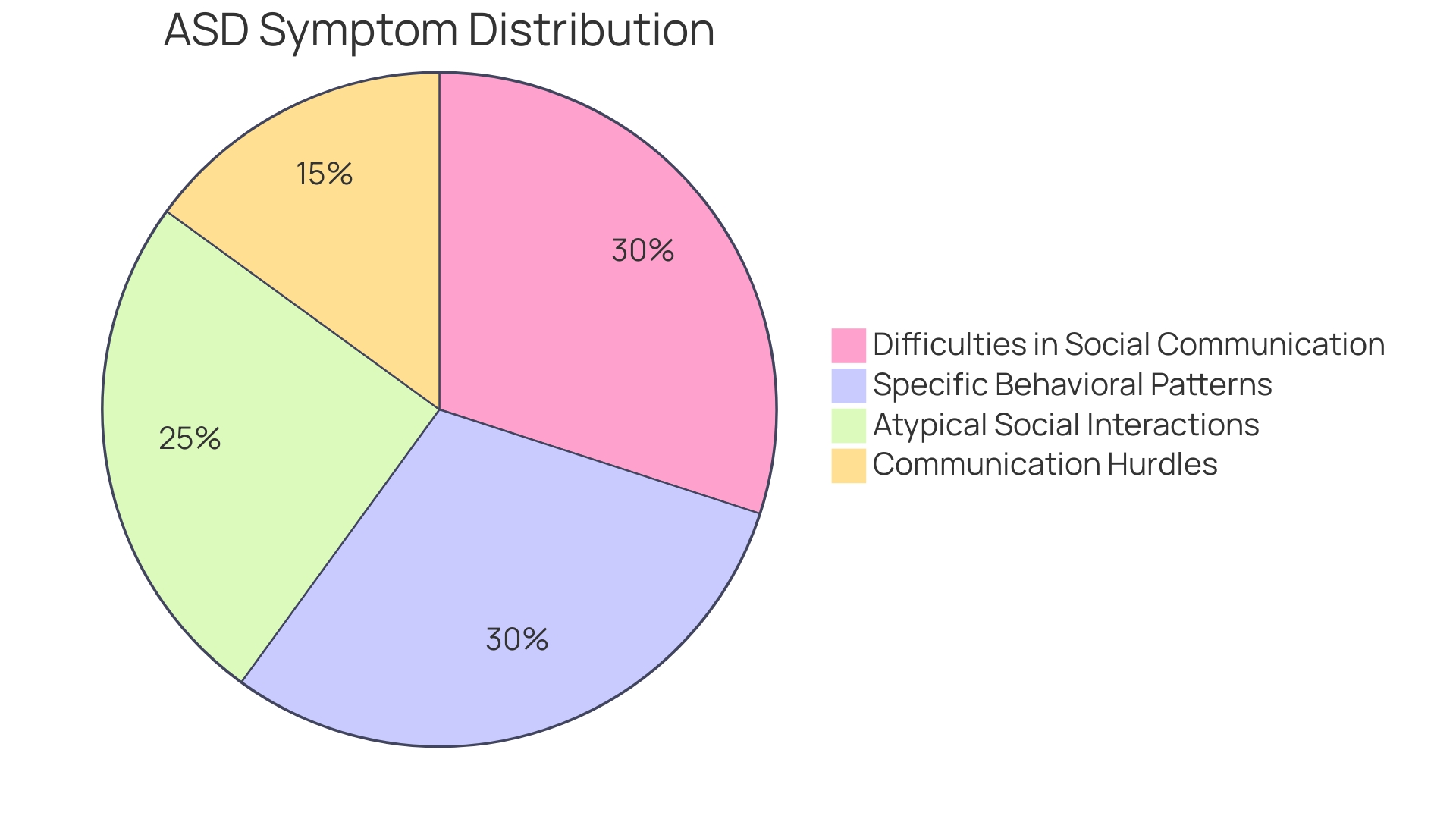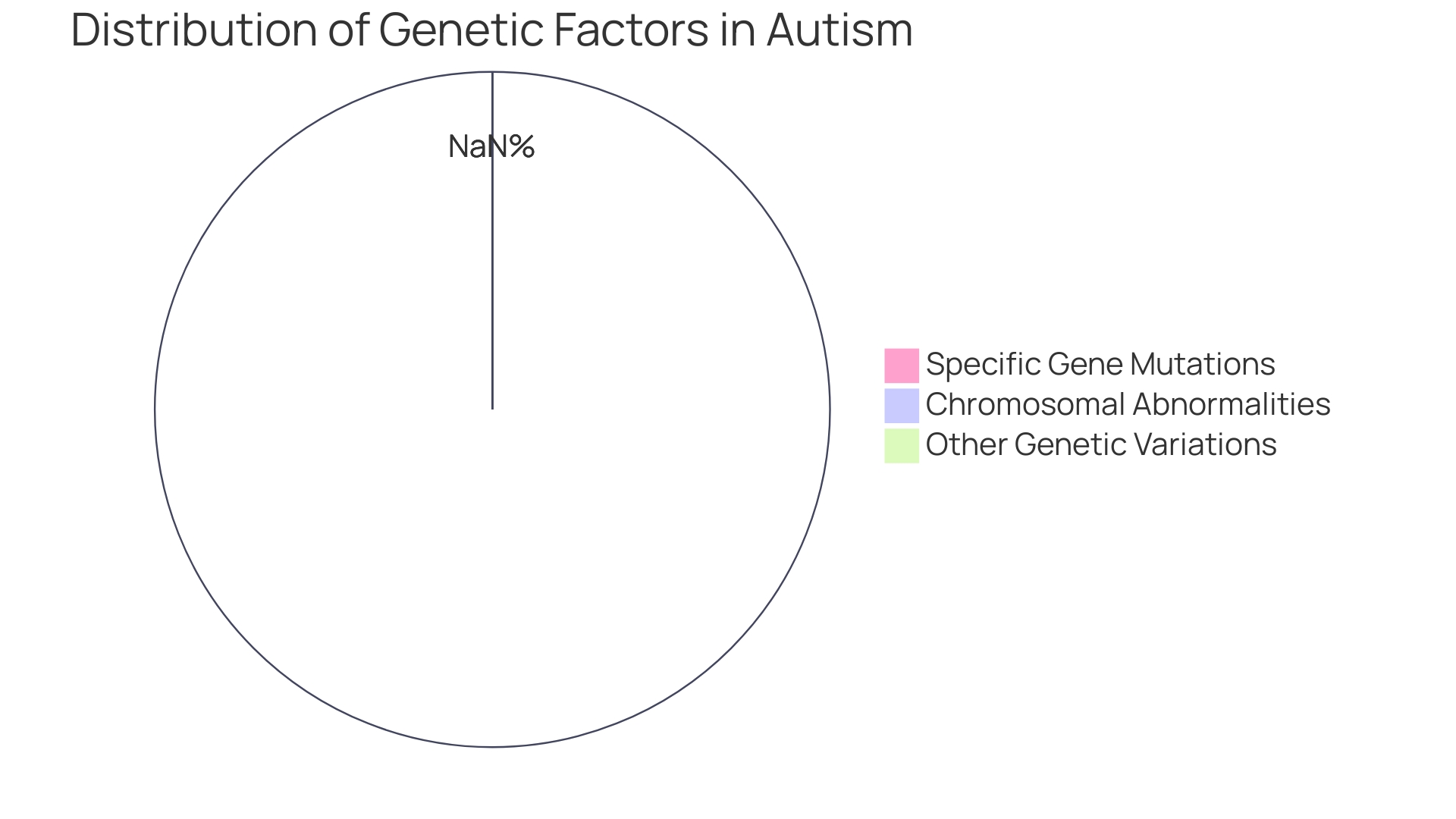Introduction
Understanding the early signs and symptoms of autism spectrum disorder (ASD) is crucial for parents and caregivers in navigating the journey towards diagnosis and support. With a growing number of adults living with ASD without a formal diagnosis, it is more important than ever to recognize the common indicators of ASD, such as difficulties in social communication and repetitive behaviors.
By familiarizing themselves with these signs, parents can gain a better understanding of their child's needs and access tailored interventions to improve their quality of life. In this article, we will explore the process of diagnosing ASD, the different types of evaluations and tests available, the role of genetic testing, the importance of experienced diagnosticians, and practical tips for parents on this journey.
Recognizing Early Signs and Symptoms
Understanding the early markers of autism spectrum disorder (ASD) is a vital part of navigating the journey toward diagnosis and support. With 1 in 45 adults in the U.S. now identified with ASD, the importance of recognizing these signs has never been more evident.
Despite increased awareness and screening initiatives, many individuals may reach adulthood without a diagnosis, having navigated life's complexities unaware of the autism-related challenges they face. Key indicators of ASD encompass difficulties in social communication and a pattern of restricted, repetitive behaviors.
Adults on the spectrum may have spent years adapting to or masking these signs, not realizing they stem from ASD. For those questioning whether they or someone they know could be on the spectrum, familiarizing themselves with these common symptoms is a crucial step. This awareness can pave the way for a better understanding of ASD and the pursuit of tailored interventions that can significantly improve quality of life. Whether it's atypical social interactions, communication hurdles, or specific behavioral patterns, identifying these traits can lead to transformative support and resources.

Understanding the Diagnostic Process
Identifying autism spectrum disorder (ASD) can be a complex process, involving a multidisciplinary approach that taps into the expertise of psychologists, pediatricians, and speech-language pathologists. This collaborative effort centers around an in-depth assessment that scrutinizes the child's developmental milestones, behavior, and employs a suite of standardized tools and screenings.
Despite the intricate nature of the diagnostic journey, it is underscored by the importance of parental understanding and participation. As noted by the Mayo Clinic Health System, diagnosing ASD lacks the clarity of a straightforward medical test, making the process subjective and tailored to each individual's unique symptom patterns.
This nuanced understanding aligns with the insights from Caroline Alves' research, which brought together an international team from diverse scientific backgrounds to delve into the multifaceted aspects of medical and neurological data. Moreover, the openness of the autistic and neurodivergent community towards self-diagnosis reflects a shift in perspective, acknowledging the limitations and challenges of obtaining a conclusive diagnosis through traditional medical models. In this evolving landscape, parents are empowered to take an active role in discerning the needs of their child, equipped with the knowledge that a formal diagnosis, while helpful for some, is not an absolute necessity for all.
Types of Evaluations and Tests
Navigating the landscape of autism diagnosis can be complex, with a spectrum of assessments available to characterize a child's unique profile. These assessments may encompass evaluations of cognitive abilities, language and communication skills, social interactions, and adaptive behaviors.
Each of these evaluations sheds light on the individual strengths and areas where a child may face challenges. While these structured assessments can guide professionals in determining if a child aligns with the criteria for autism, it's important to note that being part of the autistic and neurodivergent community does not hinge on formal diagnosis.
In fact, many within these communities embrace self-identification due to the limitations and often inconclusive results of medical testing models. An official diagnosis is not a prerequisite to seeking the support necessary for thriving. For some, the decision to pursue formal diagnosis is driven by personal reasons, but for others, the journey to understanding and embracing their neurodiversity is one that does not necessarily require validation from a diagnostic process.
The Role of Genetic Testing
Genetic testing can play a significant role in understanding the genetic factors associated with autism. While it is not necessary for all individuals with autism to undergo genetic testing, it can provide valuable insights into the potential underlying causes of autism.
Genetic testing can identify specific gene mutations or chromosomal abnormalities that may contribute to the development of autism. It is important to consult with a healthcare professional to determine if genetic testing is appropriate for your child.

Screening Questionnaires and In-Depth Tests
In the journey toward understanding autism in children, screening questionnaires and specialized tests like the Autism Diagnostic Observation Schedule (ADOS) are pivotal tools. These questionnaires, often filled out by parents or caregivers, shine a light on potential areas for further examination. They are the first step in a larger, collaborative process to pinpoint the unique challenges a child may face, including those related to feeding and nutrition—a common concern among children on the spectrum.
The ADOS, conducted by trained professionals, delves deeper. It assesses the child's social communication and behavior through direct observation. This comprehensive evaluation, when coupled with a parent's insights on day-to-day nutrition and lifestyle factors affecting their child, creates a powerful framework for tailoring interventions to each child's needs.
Importance of Experienced Diagnosticians
The journey to an accurate autism diagnosis can be intricate, necessitating the expertise of seasoned diagnosticians. Such professionals come from diverse backgrounds including neurology and neuroscience, and often collaborate with experts in physics, statistics, and computer science to analyze complex medical and brain imaging data. They are adept at identifying the nuanced signs of autism, which may be missed by less experienced practitioners.
With their comprehensive training, these diagnosticians conduct in-depth evaluations, skillfully interpreting the data to provide a reliable diagnosis. This interdisciplinary approach is exemplified by research teams like those involving Caroline Alves, whose work integrates various scientific disciplines. Although the autism community accepts self-diagnosis, as many face hurdles in obtaining a definitive diagnosis through medical testing, engaging with experienced diagnosticians can be instrumental in ensuring that individuals receive the tailored support and interventions they need to thrive.
Practical Tips for Parents
Understanding autism and its complexities is a significant step for any parent. While a formal diagnosis is not always necessary, as the autistic and neurodivergent community accept self-identification, there are reasons one might pursue it.
For instance, if specific educational accommodations or workplace adjustments are required, a formal diagnosis can be instrumental. However, it's important to acknowledge that the path to diagnosis can be fraught with challenges, and some may receive inconclusive results despite their efforts.
For those embarking on this path, being informed is crucial. Maintain a detailed record of your child's developmental progress and any notable behaviors.
This can be a vital resource during the evaluation process. Engage with support networks for advice and assistance; they can be a wellspring of comfort and knowledge.
Preparing your child for what lies ahead is equally important — discuss the upcoming evaluation in terms they can understand. Throughout this process, ensure open communication with healthcare professionals and don't hesitate to ask questions. Your role as an advocate for your child is paramount, always aim to secure the support and interventions that cater to their unique needs. And lastly, remember to take time for your own well-being. The journey may be arduous, but you are not alone, and support is available to aid both you and your child.
Conclusion
Recognizing early signs of autism spectrum disorder (ASD) is crucial for parents and caregivers. Understanding indicators like difficulties in social communication and repetitive behaviors allows for tailored interventions to improve a child's quality of life. The diagnostic process involves a multidisciplinary approach, with parental involvement being vital.
While not necessary for everyone, evaluations and tests can provide insights into a child's unique profile. Genetic testing can uncover potential underlying causes of autism. Screening questionnaires and specialized tests help identify challenges and guide interventions.
Experienced diagnosticians ensure accurate diagnoses, enabling individuals to receive the necessary support to thrive. Practical tips for parents include record-keeping, engaging with support networks, preparing children for evaluations, advocating for their needs, and prioritizing self-care. Understanding early signs of ASD empowers parents to navigate the journey effectively, benefiting individuals on the autism spectrum.




